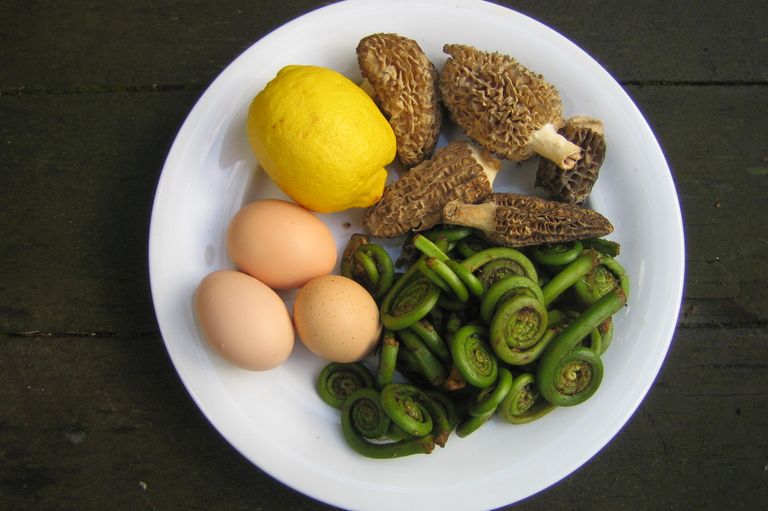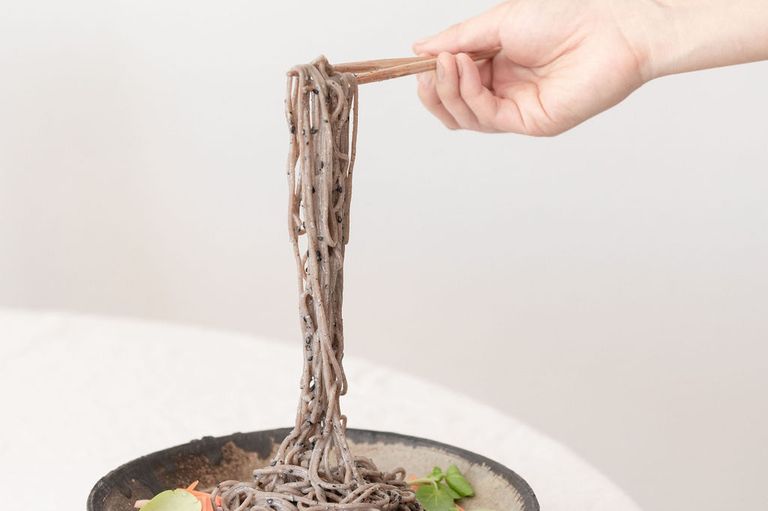Sustainability
How to Cook Fiddleheads, the Vegetable That Tastes of Spring
Intimidated by these furled vegetables? Don't be. Here's how to source and cook fiddlehead ferns to springy perfection.
Popular on Food52
Continue After Advertisement
20 Comments
rachaelmr
May 21, 2020
This may be anecdotal but I've been eating them for years and there is no way I would boil them for 15 minutes. It is true that some people have digestive or even headache problems with them (Forager Sam Thayer says that this is because they are misidentified 'interrupted' or 'cinnamon' fern which are mildly toxic, not ostrich) - they don't agree with everyone, but I have never heard of their 'toxicity' - bracken, however, though not 'toxic' is a carcinogen and causes long term stomach problems if eaten often. But Ostrich fern (the fiddleheads we are able to get seasonaly) do not have this history. None of these recipes above have boiled fiddleheads for 15 minutes - you would know because they turn a sickly olive green color and are mushy (I've overcooked a few myself). A quick blanch or steam for most recipes does the trick (my favorite is a blanch, then a high heat roast with olive oil & sea salt). I do nothing before I pickle them (makes great seasonal kimchi) - if hot pickling, that is enough cooking there, if not, the preserving process is technically 'cooking' (same with canning for Winter). Again, this is my experience, but it is pretty extensive over many years. I love them and eat them as often as I can.
Carmen O.
May 21, 2020
I was looking for recipe for fiddleheads and asparagus (I grow both) and kept finding that "boil for 15 minutes" or you'll die. I learned from someone who would forage for them and he mentioned "if you want them to melt", so I have been boiling them for 5 minutes. I figured that if he made it to 81, so can I. I started with one plant 14 year ago and they have spread to a few hundred, just finished picking some. I have a wildlife habitat, right in the middle of a town of 99% lawns. Still alive at 73. Of course, if the powers that are say 15, I'm not going to tell anyone 5 minutes.
ms.barlow
July 30, 2020
try this Course: Appetizer, Side DishCuisine: AmericanKeyword: Asparagus, Dryad Saddle, Fiddleheads
Ingredients
4 large spears of asparagus cut on the oblique
3 small ramps leaves sliced 1/2 inch, stem sliced 1/4 inch
1/2 cup fiddlehead ferns (a couple handfuls) stems trimmed to 2-3 inches in length
1 cup dryad saddle mushrooms pores scraped and shaved on a mandoline, loosely packed
2 tablespoons unsalted butter or light bodied lard like duck or chicken fat
Kosher salt to taste
Fresh lemon juice to taste (optional)
Instructions
Heat equal parts of the oil in an 8 inch saute pan and a 6 inch saute pan. Add the asparagus to one pan, cook for a minutes or two and lightly brown on medium heat, then add the fiddleheads and cook for 3 minutes more, stirring occasionally and seasoning.
Meanwhile, sweat the ramp bulbs in the small saute pan a tablespoon of butter and the shaved dryad saddle, season to taste and cook on medium low, until they're cooked, wilted and steaming. The mushrooms should stew in their own liquid with the ramps, but not color.
When the fiddleheads and asparagus are hot throughout, and the mushrooms are wilted and have released their water, toss the asparagus with the ramp leaves quickly just to wilt, double check the seasoning of both pans, adjust as needed, then mound the asparagus on a warmed serving dish, top with a line of the dryad saddle mushrooms and serve immediately, with a squeeze of fresh lemon on the side if you want.
Ingredients
4 large spears of asparagus cut on the oblique
3 small ramps leaves sliced 1/2 inch, stem sliced 1/4 inch
1/2 cup fiddlehead ferns (a couple handfuls) stems trimmed to 2-3 inches in length
1 cup dryad saddle mushrooms pores scraped and shaved on a mandoline, loosely packed
2 tablespoons unsalted butter or light bodied lard like duck or chicken fat
Kosher salt to taste
Fresh lemon juice to taste (optional)
Instructions
Heat equal parts of the oil in an 8 inch saute pan and a 6 inch saute pan. Add the asparagus to one pan, cook for a minutes or two and lightly brown on medium heat, then add the fiddleheads and cook for 3 minutes more, stirring occasionally and seasoning.
Meanwhile, sweat the ramp bulbs in the small saute pan a tablespoon of butter and the shaved dryad saddle, season to taste and cook on medium low, until they're cooked, wilted and steaming. The mushrooms should stew in their own liquid with the ramps, but not color.
When the fiddleheads and asparagus are hot throughout, and the mushrooms are wilted and have released their water, toss the asparagus with the ramp leaves quickly just to wilt, double check the seasoning of both pans, adjust as needed, then mound the asparagus on a warmed serving dish, top with a line of the dryad saddle mushrooms and serve immediately, with a squeeze of fresh lemon on the side if you want.
ms.barlow
July 30, 2020
you can buy ramps leaves on this amazon link https://www.amazon.com/Allium-Tricoccum-Tasting-Family-20-wbut2023/dp/B00W9KZSJW
ms.barlow
July 30, 2020
https://www.amazon.com/Allium-Tricoccum-Tasting-Family-20-wbut2023/dp/B00W9KZSJW ramp leave
sega10028
May 18, 2020
I just made these for the first time. I blanched them for maybe 2 minutes then sauteed them in olive oil and butter for a few minutes more. They were crisp, almost like asparagus, without a strong or memorable flavor. And no adverse gastrointestinal side effects! If I'd steamed or boiled them for 12-15 minutes, I think they would have been horribly overcooked and mushy.
Lizzie G.
February 24, 2020
I did not know this small detail about cooking them before eating! Last spring I got some from my CSA and was so excited to grill them. I seasoned with olive oil and salt and snacked on a few raw ones (like any hungry cook would waiting for the coals to be lit). I then did a quick couple of minutes over the grill. Within hours my husband and I were sick. The food poisoning part is very real - enough so that I’m not sure I can eat these again. Don’t take the risk - definitely blanch beforehand!!
graciela_L_meneses
June 18, 2019
Hello everyone! I just came from San Francisco, California. This is the second time I visit this amazing and gourmet city, and this time I had time to check in the Ferry Building Market. The Far West Fungi, was the first store my husband and I stopped by. Fresh and dried mushrooms, such as morel, and porccini were the first attraction. The store is small but full with foods that I'm sure gourmands and chefs die for. I saw fiddlehead ferns for the first time, and I got very interested with these vegetables. I saw a guy buying them and I didn't loose opportunity to ask how to cook them: he kindly told me how. Today, I cooked the ferns to serve them as one of the two sides for a steamed-baked salmon, the other side was pak-choy with oyster sauce. I followed the gentlemen's instructions but I put my personal touch by adding roasted garlic infused in olive oil, fresh ground pepper, and chopped . The fiddlehead ferns became a delicious experience!! Gracias
Efiya F.
April 30, 2018
I live in Indonesia and here we eat both types of ferns, the ostrich as well as the bracken. And I never hear anything about them causing food poisoning! Perhaps we're not too scientific about it. We love ferns in coconut milk soup or stir fried with sambal belacan or steamed in banana leaf wrapper with minced chicken or tempeh. I'm starting to drool just writing this.
Albert
May 9, 2016
I just tried fidd legends for the first time and I read on here that you boil them for 20 min but I found out I cooked them to long cause they were mushy are they suppose to be mushy when I eat them ? Please help me on this
Lindsay-Jean H.
May 9, 2016
No, I don't think they are at their best cooked to mush. As noted above, safety standards recommend boiling fiddleheads for 15 minutes or steaming them for 10 to 12 minutes prior to use in recipes.
Sandy O.
May 11, 2013
Food poisoning is rather a strenuous term---if you don't boil/steam them for ten minutes, if you try to do the stir fry until crisp tender thing--the worst that happens is what my mother used to call the trots. Clean ya right out.
darksideofthespoon
May 10, 2013
I was raised on fiddleheads... Love them with butter and vinegar! My ex was convinced I would poison myself if I ate them... as he was from England and only used to the Bracken variety.
Lindsay-Jean H.
May 23, 2013
Butter and vinegar sounds great! I once got bracken fiddleheads in a CSA box, I'm glad I didn't know then that eating them was controversial, or I might not have tried them!


/8465a5db-8b64-425b-96c2-2b9650b72878--Webp.net-resizeimage.jpg)

/e9de8cd3-72bc-49d2-b05b-8c69d4b6e127--2018-0418_fiddlehead-tempura-sriracha-sauce_3x2_ty-mecham_018.jpg)
/9dd2e67a-5f32-477e-99da-eece6c2f317e--fiddlehead_and_green_bean_salad17.jpg)

/d176a06f-6cd6-48d2-b0ba-2dff410cccbd--blogger-image-402117453.jpg)
/ed662372-ac38-470b-9aed-01ac1eb5eb35--miso-fiddleheads.jpg)

See what other Food52 readers are saying.